Photography courtesy of Lowell Washburn, all rights reserved.
Fast, clear, and cold as ice; the streams of the western Black Hills are my favorite place to look for trout. Although I never catch any really big ones, the trout are always super plentiful and I’ve yet to have a slow day while fishing in The Hills.
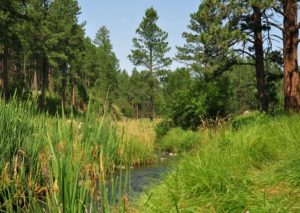
The past week at Custer State Park has been phenomenal. Temperatures and humidity have been ideal and trout are on the rampage. I’ve mostly been catching rainbows, and the majority have been running from 10 1/2 to 12-inches in length. I’ve also been missing a lot of fish — including several that I thought were hooked pretty good. No matter; the ones I have managed to get a good set on have been real scrapers. Some have been stunning performers — conducting exciting series of three or four spectacular leaps before giving up, while others refuse to surrender at all.
Every stream — including the slightest trickles — are simply loaded with native brook trout. Thick as minnows and as aggressive as piranhas, they’ll willingly attack just about anything you care to chuck their way. Unfortunately, most of these miniature South Dakota char are only averaging from seven to nine inches. I accidentally killed one of those seven-inchers this week. In spite of the size, I kept and grilled him. The pinkish, salmon colored meat — all two or three bites worth — was simply delicious. I’ve also been creeling and consuming a handful of rainbows. Fish managers say not to feel bad about eating Black Hills trout; there are plenty to go around, they say. The Black Hills rainbows are a tad bit pickier that the more reckless brookies. Although fish show immediate interest in just about everything you offer, getting them to actually inhale the hook can be a challenge.
New Topic: While exploring the Grace Coolidge Area last Wednesday, I encountered two Merriam’s turkeys feeding along the stream. I hunkered in, and got a pretty good view — especially of the nearest gobbler. Although deep into the summer molt, he was still a magnificent bird. You have to respect a turkey who can survive the winter in a stark landscape offering little more than hungry cougars, coyotes, rocks, a few sprigs of grass and Ponderosa pine seeds.
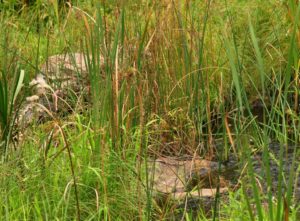
Although the majority of the free roaming bison are still congregated in large herds and mostly keeping to the south end of the 71,000-acre state park, a few of the old and exiled bachelor bulls can be found wandering the trout stream valleys. Approaching the end of their days, the solitary old bulls appear gaunt, defeated and melancholy. But even when standing at the end of their trail, the ancient bison remain an impressive and amazing example of God’s creation. Even though the tired giants seem docile, I always give them a wide berth.
Attached are some photo impressions of August trout fishing in the Custer area.

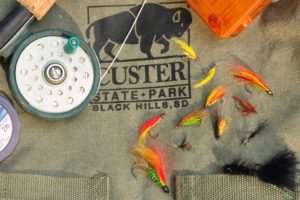
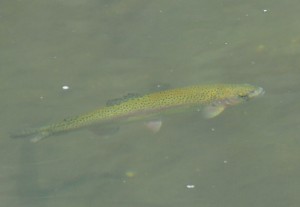
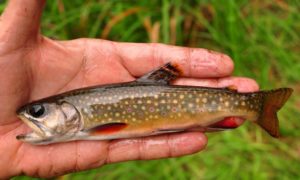
 Tom Cope
Tom Cope Sue Wilkinson
Sue Wilkinson Susan Judkins Josten
Susan Judkins Josten Rudi Roeslein
Rudi Roeslein Elyssa McFarland
Elyssa McFarland Mark Langgin
Mark Langgin Adam Janke
Adam Janke Joe Henry
Joe Henry Kristin Ashenbrenner
Kristin Ashenbrenner Joe Wilkinson
Joe Wilkinson Dr. Tammy Mildenstein
Dr. Tammy Mildenstein Sean McMahon
Sean McMahon